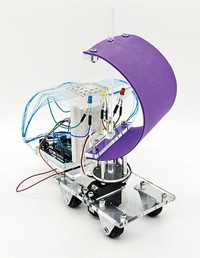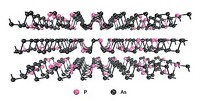Advertisement
Grab your lab coat. Let's get started
Welcome!
Welcome!
Create an account below to get 6 C&EN articles per month, receive newsletters and more - all free.
It seems this is your first time logging in online. Please enter the following information to continue.
As an ACS member you automatically get access to this site. All we need is few more details to create your reading experience.
Not you? Sign in with a different account.
Not you? Sign in with a different account.
ERROR 1
ERROR 1
ERROR 2
ERROR 2
ERROR 2
ERROR 2
ERROR 2
Password and Confirm password must match.
If you have an ACS member number, please enter it here so we can link this account to your membership. (optional)
ERROR 2
ACS values your privacy. By submitting your information, you are gaining access to C&EN and subscribing to our weekly newsletter. We use the information you provide to make your reading experience better, and we will never sell your data to third party members.
Materials
Sniffing single molecules with graphene
Unorthodox architecture helps graphene achieve extreme resolution
by Matt Davenport
April 18, 2016
| A version of this story appeared in
Volume 94, Issue 16
Electronic sensors can now sniff out single gas molecules by using graphene, according to a research team from the Japan Advanced Institute of Science & Technology (Sci. Adv. 2016, DOI: 10.1126/sciadv.1501518). Graphene has previously shown itself capable of single-molecule sensitivity, but this earlier feat required high magnetic fields. Now, researchers have observed single carbon dioxide molecules with a graphene-based sensor that operates at modest, readily supplied voltages. This work could lead to compact, highly sensitive devices for personal environmental monitoring, says team member Jian Sun. Sun and his colleagues developed their sensor using an unorthodox architecture. Usually, graphene in a sensor lies flat on a substrate, the team says. In this geometry, however, interactions between graphene and its support can mask interactions between graphene and gas molecules. So the researchers angled a two-atom-thick graphene ribbon between two electrodes at different heights to lift the ribbon away from its silicon dioxide substrate. When a voltage is applied between the electrodes, each adsorbed CO2 molecule scatters electrons in the graphene, creating discrete but discernible changes in its resistance, the team reports.






Join the conversation
Contact the reporter
Submit a Letter to the Editor for publication
Engage with us on Twitter